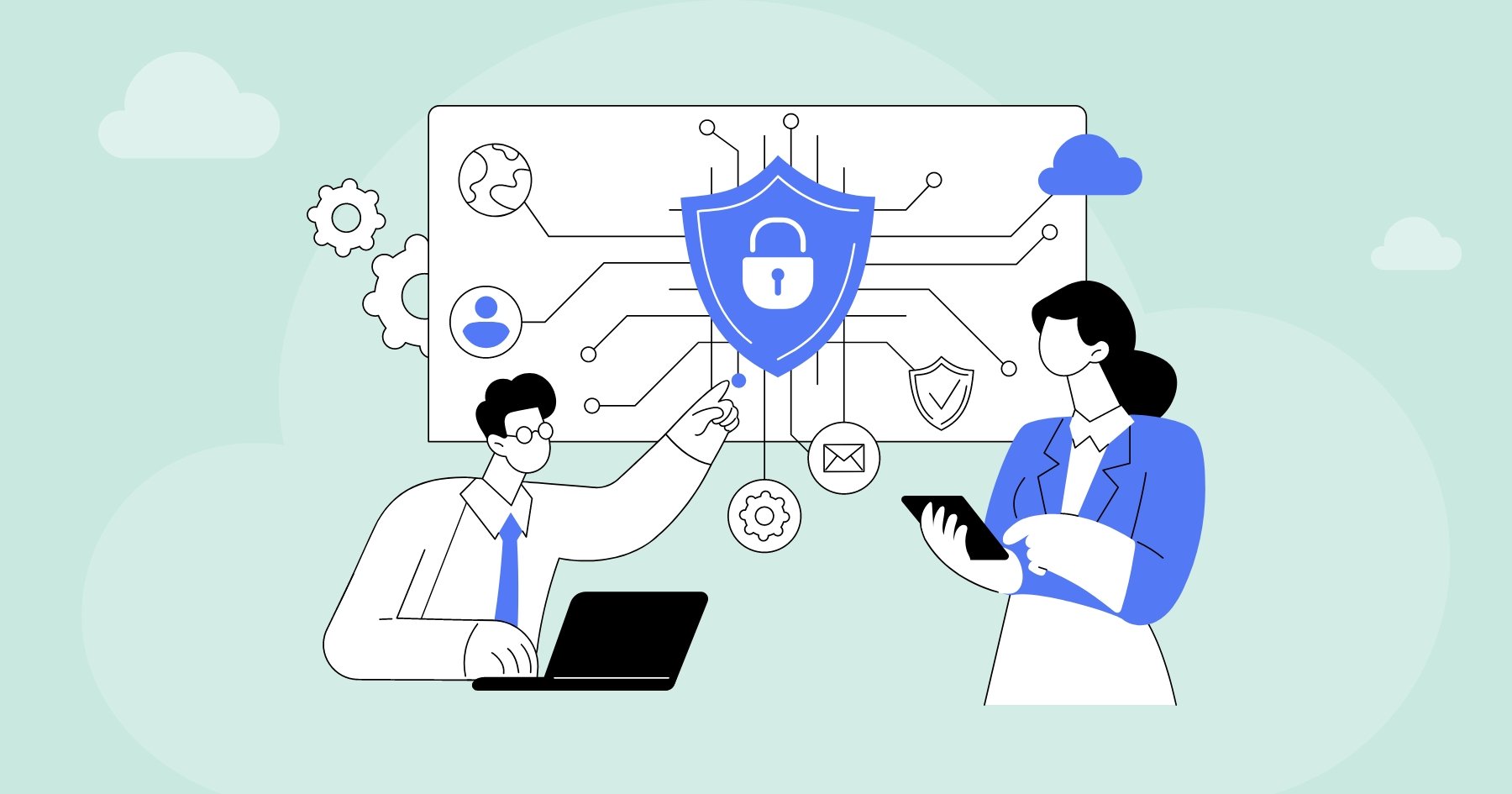Every organization deals with some amount of data, which means that cybersecurity risk is a universal concern. Data breaches and other cyber incidents can have long lasting financial and reputational consequences, so a strong cybersecurity program is a must.
While your organization might have an effective program in place, do you know how well your vendors are protecting your data?
After all, some of the most notable data breaches in recent years were caused by third parties, like 2020’s SolarWinds breach and the MOVEit breach of 2023. Although the details of these breaches are complex, cybersecurity incidents generally originate from a few basic factors. Understanding some of the top third-party vendor cybersecurity risks can help you better manage the risk they pose to your organization.
4 Third-Party Vendor Cybersecurity Risks
Third-party vendors can provide a lot of value, but it’s important to recognize some of these cybersecurity risks that can harm your organization and customers. Whether your vendor is processing and storing your sensitive data, or simply has access to your systems, here are some risks you’ll need to identify:
- Incomplete security practices – You’ll want to be aware of any vendors who fail to fully implement security practices, such as frequent testing or employee training. For example, you may have reviewed a vendor’s incident detection and response plan and found it to be well written and comprehensive, but unless the plan has also been thoroughly tested, you won’t know whether it’s effective.
- Excessive privileges – The principle of least privilege means that a person shouldn’t access data unless they need it to perform their duties. A vendor who is granting network access to those that don’t need it is putting your data at greater risk of exposure.
- Poor vendor management – It’s not uncommon for vendors to outsource some of their products or services to other vendors, which are known as your fourth parties. However, it’s important to be aware of any fourth parties who have access to your data. If your vendor fails to properly manage its own vendors, your data could be at risk of a data breach.
- Unclear data policies – An unclear vendor data policy that’s not specific to your organization can create confusion and potential security gaps that leave your information unprotected. It’s critical to verify the details of how your vendor will classify and store your data throughout the engagement, and how they will return or destroy your data after your contract ends.

How to Manage Third-Party Vendor Cybersecurity Risk
Managing cybersecurity risk can seem intimidating if you aren’t familiar with some of the more complex principles and language, but remember that managing any type of third-party risk involves a few best practices that anyone can implement into their program.
Here are three tips that can help you manage third-party vendor cybersecurity risk:
- Perform vendor due diligence thoroughly – Due diligence is an essential activity that must be done before the contract is signed and then periodically throughout the vendor engagement. Make sure to go beyond the bare minimum when collecting and reviewing vendor information to ensure that you’re not overlooking any vendor issues that can cause data breaches or regulatory violations. This is especially true for your critical third-party vendors.
There are three key categories of documentation you should review:
- Planning documents: These cover your vendor’s third-party risk management and incident management and response plans.
- Legal and procedure documents: You’ll want evidence of things like confidentiality agreements, security awareness training, and cyber insurance.
- Policy documents: This includes topics like encryption, privacy, and information security.
- Continuously monitor your vendor – Monitoring your vendor’s risk and performance should be a continuous activity because new threats can emerge at any time. New software vulnerabilities or a recent decline in performance should be identified and mitigated quickly to prevent a larger problem occurring down the line.
- Validate testing, education, and training – Ask for evidence of regular security testing like vulnerability, penetration, and social engineering. This will help ensure that your vendor is actively searching for vulnerabilities within its system and remediating them before they’re exploited. Your vendor should also be participating in regular security education and training, which will help its employees stay informed of best practices.
- Compare your vendor's cybersecurity practices to the CIA triad – Confidentiality, integrity, and availability are three core pillars of a strong cybersecurity program. Confidentiality refers to data privacy, while integrity is meant to protect data from unauthorized use or modification. And availability should properly secure information but ensure that it's accessible to those that need it. A vendor's cybersecurity program should effectively cover all three of these components.
Even though your vendors are one of the biggest contributors to your cybersecurity risk, it’s possible to create a safer environment that protects your data. By recognizing some of the most common risks and taking an active approach to manage them, you can help reduce the likelihood of a significant cybersecurity event.





.gif?width=1920&name=Sample-Graphic-Animation%20(1).gif)




